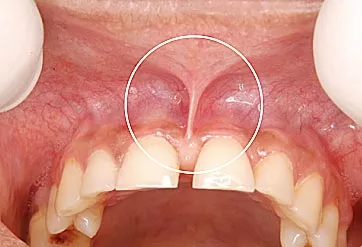Oral Surgeries – Safe & Advanced Surgical Dental Care

Many common and general procedures done in the office of the dentists are considered as a part of oral surgery. Some common examples of oral surgery are as follows. There are several other dental procedures and its need varied from case to case basis.
Tooth extractions – The most recognizable form of oral surgery is tooth extraction. Tooth extractions are often the way to go if a person is suffering from a non restorable infected tooth, tooth decay with hopeless prognosis or if primary tooth fails to fall out, inhibiting the growth of permanent tooth.
Wisdom Tooth Extraction
Wisdom tooth extraction is a surgical procedure carried out to remove one or more wisdom teeth of the four permanent adult teeth located at the back corners of our mouth on the top and bottom.
If a wisdom tooth does not have enough room to grow or if there are complications hindering its growth which results in pain, infections or other dental problems, one needs a wisdom tooth extraction. A dentist or an oral surgeon might execute the process of wisdom tooth extraction. Dentists sometimes recommend wisdom tooth extraction even if the impacted tooth isn’t currently causing problems to prevent potential future problems.
Various types of impacted teeth

Crown Lengthening Procedure (CLP)
Crown lengthening is a common periodontal surgical procedure in which the surgeon removes gum tissue, bone or both to expose more of the tooth for functional and aesthetic purpose. Crown lengthening procedure is carried out when the tooth needs to be fixed as sometimes, not enough of the tooth is exposed above the gum to support a filling or a crown. The part of the tooth exposed may shorten due to a variety of reasons such as when a part of tooth breaks off or when a crown or filling falls out and there is decay underneath. Sometimes this procedure is carried out for aesthetic purposes to reduce “gummy smile”.
Call Us
080 55440120
OR
Book an Appointment

Aesthetic CLP


Functional CLP

Frenectomy
Frenectomy is the process of removal of the frenum, a small fold of tissue which prevents an organ in our body from moving too far. Sometimes in infants, an elongated lingual frenum is generally referred to as ‘tongue-tie’. If frenectomy is not performed when required, in later years the child may have difficulty in speaking.The procedure is very simple done in 15 mins and under local anesthesia.


Oral Cyst
An oral cyst is a thin sac filled with fluid or soft jelly like material on the inside of one’s mouth. A very common type of cyst called the radicular cyst is found at the tip of the roots of dead teeth or infected teeth or the cysts can also be found around crowns and roots of buried teeth. Most cyst form due to infection of a tooth causing its death or because of a mistake in the way the teeth have developed, for example, Dentigerous cyst or Odontogenic keratocyst(OKC).
Another common cyst is mucous cyst or a mucocele, this cyst is harmless and painless. It might bother someone as they feel a bump inside of their mouth. We atDixit Dental Care have a team of oral surgeon who operates on these kind of cystic lesions.
Oral Lesions
An oral lesion is an ulcer that occurring on the mucous membrane of the oral cavity. They are a very common occurrence and generally accompany many diseases and by many mechanisms.
The most common causes of oral lesions are dental traumas (i.e. rubbing from a broken filling or a sharp edge), infections, systemic conditions, associated dermatological diseases and recurrent aphthous ulcers commonly known as canker sores.
White Patches in The Mouth
The formation of a white or greyish patch in and around the upper palate of one’s mouth or on one’s lips is to be taken seriously because it could mean the patient may develop leukoplakia, or what is commonly referred to as keratosis.
Common causes of the formation can include a broken tooth, rough denture in general, or the consumption of increasing levels of tobacco through the practice of smoking pipes or cigars.
Jaw Surgeries/ Orthognathic Surgeries
Orthognathic surgery, commonly known as corrective jaw surgery or simply jaw surgery is done by an oral and maxillofacial surgeon (OMS) designed to straighten, realign or corrects skeletal deformities of the jaw using surgical plates or templates, screws and wires.
The conditions that prompt the need for orthognathic surgery includes birth defects, chronic jaw or joint pain, inability of one’s lips to come together without straining, trauma or injury to the jaw and face, open bite, protruding jaw, receding lower jaw and chin
Jaw surgery is the way to go if problems cannot be resolved with orthodontics alone. Jaw surgery is recommended to be done after growth stops. Recommended ages are 14 to 16 years for females and 17 to 21 years for males.
What to expect
- Our policy of practice of dentistry promises all patients the highest quality of dental care.
- Our biggest aim is to understand your problems and guide you on the best course of action to treat it and control it for you and your family.
- All relevant diagnostic procedures will be carried out before a decision is made.
- We will inform you about options and costs for each for you to make an informed decision.
- We will always try to learn about your medical records and ongoing medications before treating you. This helps us to treat you safely. All information about you will be kept confidential.
- We always use disposable items whenever possible and conform to strict sterilization procedures regarding our apparatus and instrument to ensure your safety at all times.

